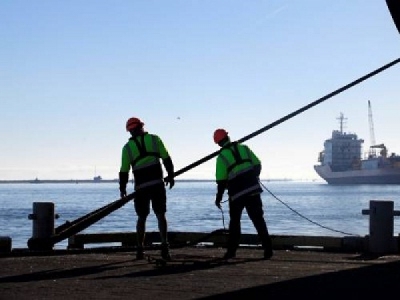
Posted on September 21, 2017
By Tim O'Connell, stuff
New infrastructure and a lift in cargo, cruise ship and logging volumes has given Port Nelson a net profit of $10.8 million, a result that also boosts council coffers.
The company reported an operating profit of $22.8 million for the 2016-17 financial year, up on the $18.3m for the previous year.
The net profit after tax result was $10.8m – double the $5.3m in 2016 that included $2.7m set aside for Calwell Basin dredging and stabilisation expenses.
The increase is also positive news for Nelson and Tasman ratepayers. The port’s declared dividend of $6.5 million is shared between its shareholders, Nelson City Council and Tasman District Council.
Nelson City Council interim chief executive David Hammond said while normal procedure was to direct any such funds towards reducing debt initially, the council might choose to put the dividend towards another designated project. Any decision on this would require appropriate discussion, he said.
“We are definitely proud of the port’s performance and it is especially pleasing to have a council-controlled organisation that continues to operate on solid foundations.”
Tasman District Council spokesman Chris Choat said the dividend would be primarily used to offset rates as well as reducing debt.
Port Nelson chairman Phil Lough reported to shareholders at the company’s annual general meeting on Monday that overall cargo volumes were up with logs, motor vehicles and wine related products all performing strongly.
“Given the significant investment in infrastructure in recent years it is encouraging to see the growth in cargo volumes” he said.
Processed forestry volumes were in line with the previous year and apple volumes were around 13 per cent up on 2016.
Container volumes had reached record numbers with the 100,000 twenty-foot equivalent units level being surpassed for the first time.
Weekly container services from Maersk, Pacifica, MSC and ANL were joined by the new Seatrade service in February, which had brought increased shipping options for the region’s importers and exporters.
Cruise vessel numbers also improved during the year, with seven vessels calling over the summer season.
Log volumes grew 30 per cent in the last 12 months which Lough said had put significant pressure on port infrastructure.
In the 2015/2016 financial year, Nelson Forests Ltd, Tasman Bay Forests, PF Olsen and TENCO Ltd exported a total of 671,000 revenue tonnes of logs through the port.
However, he advised that Port Nelson would work with log exporters to increase available land for log storage going forward.
A $4m investment in the rationalisation of Port Nelson’s log storage areas in 2016 is now being followed up by a further $3 million investment over the coming 12 months, largely involving demolition of buildings and sealing of additional storage areas.
Port Nelson chief executive Martin Byrne said the net profit figure was the most pleasing aspect of the announcement in terms of comparison with previous years.
He also acknowledged the strong cargo numbers and increased log exports to Asia as key contributors to the port’s current position.
“We’re fortunate to live in a region where we’ve got a number of commodities right across the board that are in huge demand – the port benefits from that and at the end of the day the ratepayers benefit as well.”
While the impact of last year’s earthquake on Wellington’s Centreport operations had provided some positive spinoffs to Nelson, Byrne did not believe it was a big factor in the overall financial result.
“The log volumes to start with had nothing to do with Wellington and we were capturing a lot of the Marlborough cargo that potentially could go either way prior to the quake,” he said.
“It’s probably helped us a bit since then but we’ve done a lot of work with Marlborough exporters to provide the services they’re looking for.”
Byrne said the port would continue to work with importers and exporters to see if volumes could be increased further.
However, these discussions would be guided by overseas buyer demand.
A number of key infrastructure projects were also completed during the financial year.
Most notable of these was the first-stage completion of the 13,000m2 Patterson Logistics Centre in February, which had enabled the growth of wine industry-related volumes to the port.
The 9,700m2 stage two development began construction in June and is expected to be completed in December.
Other finished projects included the Plant and Food Research development on Akersten St which opened in May and an all-weather workshop facility on Rogers St in March.
The long-awaited remediation of the Calwell Slipway area is due to get underway in early November at a total cost of around $8.2m, to be jointly shared between Port Nelson and the Ministry for the Environment.
Source: stuff





